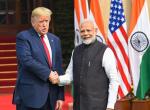Zaporizhzhia nuclear power station in south-eastern Ukraine is in the crosshairs of the Russia-Ukraine conflict since March this year. The power station, largest in Europe and one of the three presently operative nuclear power generation sources of Ukraine, is in danger of spilling over of nuclear contamination from its stored fissile material and nuclear waste generated by it, owing to numerous instances of artillery shelling and some collateral damage to the power station. Under optimal conditions of functioning, the Zaporizhzhia power station is capable of generating 5700 MW of power through its six reactors, with supplies of 38000 GWh of power annually to Ukraine`s power grid. There is a connected thermal plant also. Under operationally viable conditions, the nuclear power station can supply half of the total country`s electricity derived from nuclear power. However, only two reactors of the six installed are reported to be working at present.
The nuclear power station and the accompanying thermal plant near Enarhoder in Zaprorizhia oblast near Dnieper river, has been under military assault of the Russian forces since the beginning of the present conflict, with the Russians capturing the periphery of the power station on 4th March 2022, but allowing the Ukrainian operators of the installation to run it. Though technically, the Ukrainian nuclear power management agency, Energoatom is in charge of the Zaporizhzhia power station, de-facto control is with the Russians and the Russian military with their forces stationed within and around the power station premises. It is not clear as to how much power from the six-reactor based plant, is being fed at present, into the Ukraine`s power network. Ukraine has alleged from time to time that, Russia has connected the outward feeder lines in a manner that, part of the power is being wheeled out to Donetsk breakaway republic to the east and also further to Russia.
The fact of the matter is that the plant is dangerously placed. In the past two weeks, again shelling in and around Zaporizhzhia plant has been reported. Both Russia and Ukraine have accused each other of shelling and undermining safety of operations at the plant. The UN nuclear management watchdog, International Atomic Energy Agency (IAEA) and its Director General, Rafael Mariano Grossi of Argentina, after persistent efforts through the UN, is reported to have arranged an inspection of the operational conditions, particularly safety measures of the plant. It is of essence that, all the UN member states cooperate with Rafael Grossi`s efforts to safeguard the plant. It is encouraging that, Russia seems to be cooperating with this endeavour, though the outcome is still uncertain.
The safest option would be to quarantine Zaporizhzhia plant including the thermal station, from intrusion of military forces within a particular radius, and impose a `no-shelling and also no-fly` zone within a specified radial distance. It is not possible for IAEA to enforce such measures without cooperation of the combatants i.e. Russia and Ukraine, and a specific enforceable mandate from the UN Security Council (UNSC). A practical solution would be to allow a contingent of UN peacekeepers including observers from Russia and Ukraine, to man the prophylactic or quarantine zone around the plant. Without a consensus among the five permanent members of the UNSC, it will be very difficult to safeguard the plant and prevent the accidental dangers of nuclear fallout or contamination from radioactive material spilling over in the vicinity of the installations at Zaporizhzhia.
So far as wheeling out of electricity from the plant is concerned, an agreement will be necessary between Russia and Ukraine. Russia cannot justifiably claim any power from the Zaporizhzhia plant as it is an exclusively an Ukraine operated plant installed in Ukrainian territory. However, as a compromise measure, a quantum of power for the Donbas region may be allowed by Ukraine. At present, because of Russian military action and control over the adjacent areas of Zaporizhzhia oblast, it may be difficult for Ukraine to deny this concession to Russia.
The moot point is safety of the plant, its operations, replenishment and replacement of components and relevant material as required, and prevention of contamination of nuclear material both inputs and downstream wastes. The Ukrainians have to necessarily undertake this activity as they have the expertise for this, and with foolproof safeguards under the aegis of IAEA.
In the meantime, the overall situation in and around the Zaporizhzhia power station has been fluid and deteriorating off and on. As per the Ukrainian authorities, here have been frequent power cut-offs caused by Russian shelling of the active power line linking the plant to Ukraine`s grid. As a result of periodic shelling, the infrastructure of the power station has been damaged, risks have arisen of hydrogen leakage and sputtering of radioactive substances with possibility of fire hazard. The Ukrainian authorities have also distributed iodine tablets to residents in areas near the plant to protect the body in case of radiation leak.
The overall situation around Zaporizhzhia needs immediate redressal. The situation concerning the nuclear power facility has to be dealt with in an innovative manner. Shutting down the power station is no solution and inherent dangers of radioactive material spilling out, will always remain. Putting in place a sanitized `non-military operational zone under effective monitoring, around the power station is a necessary option but may be difficult to institute in the present continuing militarily confrontational milieu in Ukraine. Another option may be for the IAEA to take overall responsibility for active oversight of the power station and management of the engineering operations jointly by personnel of Energoatom and its Russian counterpart, Rosatom, with both Ukrainians and Russians working under UN-IAEA auspices.
(The paper is the author’s individual scholastic articulation. The author certifies that the article/paper is original in content, unpublished and it has not been submitted for publication/web upload elsewhere, and that the facts and figures quoted are duly referenced, as needed, and are believed to be correct). (The paper does not necessarily represent the organisational stance... More >>
Image Source: https://worldcrunch.com/media-library/zaporizhzhia-nuclear-plant.jpg?id=31043170&width=1245&height=700&quality=85&coordinates=0%2C287%2C0%2C287











Post new comment